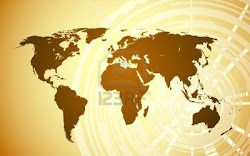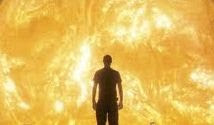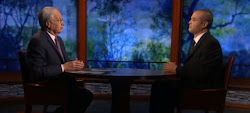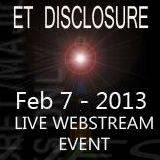http://www.economist.com/science-technology/displaystory.cfm?story_id=15543683
Be Well.
David
Making a bit of me
A machine that prints organs is coming to market
Feb 18th 2010 | From The Economist print edition

THE great hope of transplant surgeons is that they will, one day, be able to order replacement body parts on demand. At the moment, a patient may wait months, sometimes years, for an organ from a suitable donor. During that time his condition may worsen. He may even die. The ability to make organs as they are needed would not only relieve suffering but also save lives. And that possibility may be closer with the arrival of the first commercial 3D bio-printer for manufacturing human tissue and organs.
The new machine, which costs around $200,000, has been developed by Organovo, a company in San Diego that specialises in regenerative medicine, and Invetech, an engineering and automation firm in Melbourne, Australia. One of Organovo’s founders, Gabor Forgacs of the University of Missouri, developed the prototype on which the new 3D bio-printer is based. The first production models will soon be delivered to research groups which, like Dr Forgacs’s, are studying ways to produce tissue and organs for repair and replacement. At present much of this work is done by hand or by adapting existing instruments and devices.
To start with, only simple tissues, such as skin, muscle and short stretches of blood vessels, will be made, says Keith Murphy, Organovo’s chief executive, and these will be for research purposes. Mr Murphy says, however, that the company expects that within five years, once clinical trials are complete, the printers will produce blood vessels for use as grafts in bypass surgery. With more research it should be possible to produce bigger, more complex body parts. Because the machines have the ability to make branched tubes, the technology could, for example, be used to create the networks of blood vessels needed to sustain larger printed organs, like kidneys, livers and hearts.
Printing history
Organovo’s 3D bio-printer works in a similar way to some rapid-prototyping machines used in industry to make parts and mechanically functioning models. These work like inkjet printers, but with a third dimension. Such printers deposit droplets of polymer which fuse together to form a structure. With each pass of the printing heads, the base on which the object is being made moves down a notch. In this way, little by little, the object takes shape. Voids in the structure and complex shapes are supported by printing a “scaffold” of water-soluble material. Once the object is complete, the scaffold is washed away.
Researchers have found that something similar can be done with biological materials. When small clusters of cells are placed next to each other they flow together, fuse and organise themselves. Various techniques are being explored to condition the cells to mature into functioning body parts—for example, “exercising” incipient muscles using small machines.
Though printing organs is new, growing them from scratch on scaffolds has already been done successfully. In 2006 Anthony Atala and his colleagues at the Wake Forest Institute for Regenerative Medicine in North Carolina made new bladders for seven patients. These are still working.
Dr Atala’s process starts by taking a tiny sample of tissue from the patient’s own bladder (so that the organ that is grown from it will not be rejected by his immune system). From this he extracts precursor cells that can go on to form the muscle on the outside of the bladder and the specialised cells within it. When more of these cells have been cultured in the laboratory, they are painted onto a biodegradable bladder-shaped scaffold which is warmed to body temperature. The cells then mature and multiply. Six to eight weeks later, the bladder is ready to be put into the patient.
The advantage of using a bioprinter is that it eliminates the need for a scaffold, so Dr Atala, too, is experimenting with inkjet technology. The Organovo machine uses stem cells extracted from adult bone marrow and fat as the precursors. These cells can be coaxed into differentiating into many other types of cells by the application of appropriate growth factors. The cells are formed into droplets 100-500 microns in diameter and containing 10,000-30,000 cells each. The droplets retain their shape well and pass easily through the inkjet printing process.
A second printing head is used to deposit scaffolding—a sugar-based hydrogel. This does not interfere with the cells or stick to them. Once the printing is complete, the structure is left for a day or two, to allow the droplets to fuse together. For tubular structures, such as blood vessels, the hydrogel is printed in the centre and around the outside of the ring of each cross-section before the cells are added. When the part has matured, the hydrogel is peeled away from the outside and pulled from the centre like a piece of string.
The bio-printers are also capable of using other types of cells and support materials. They could be employed, Mr Murphy suggests, to place liver cells on a pre-built, liver-shaped scaffold or to form layers of lining and connective tissue that would grow into a tooth. The printer fits inside a standard laboratory biosafety cabinet, for sterile operation. Invetech has developed a laser-based calibration system to ensure that both print heads deposit their materials accurately, and a computer-graphics system allows cross-sections of body parts to be designed.
Some researchers think machines like this may one day be capable of printing tissues and organs directly into the body. Indeed, Dr Atala is working on one that would scan the contours of the part of a body where a skin graft was needed and then print skin onto it. As for bigger body parts, Dr Forgacs thinks they may take many different forms, at least initially. A man-made biological substitute for a kidney, for instance, need not look like a real one or contain all its features in order to clean waste products from the bloodstream. Those waiting for transplants are unlikely to worry too much about what replacement body parts look like, so long as they work and make them better.





No comments:
Post a Comment